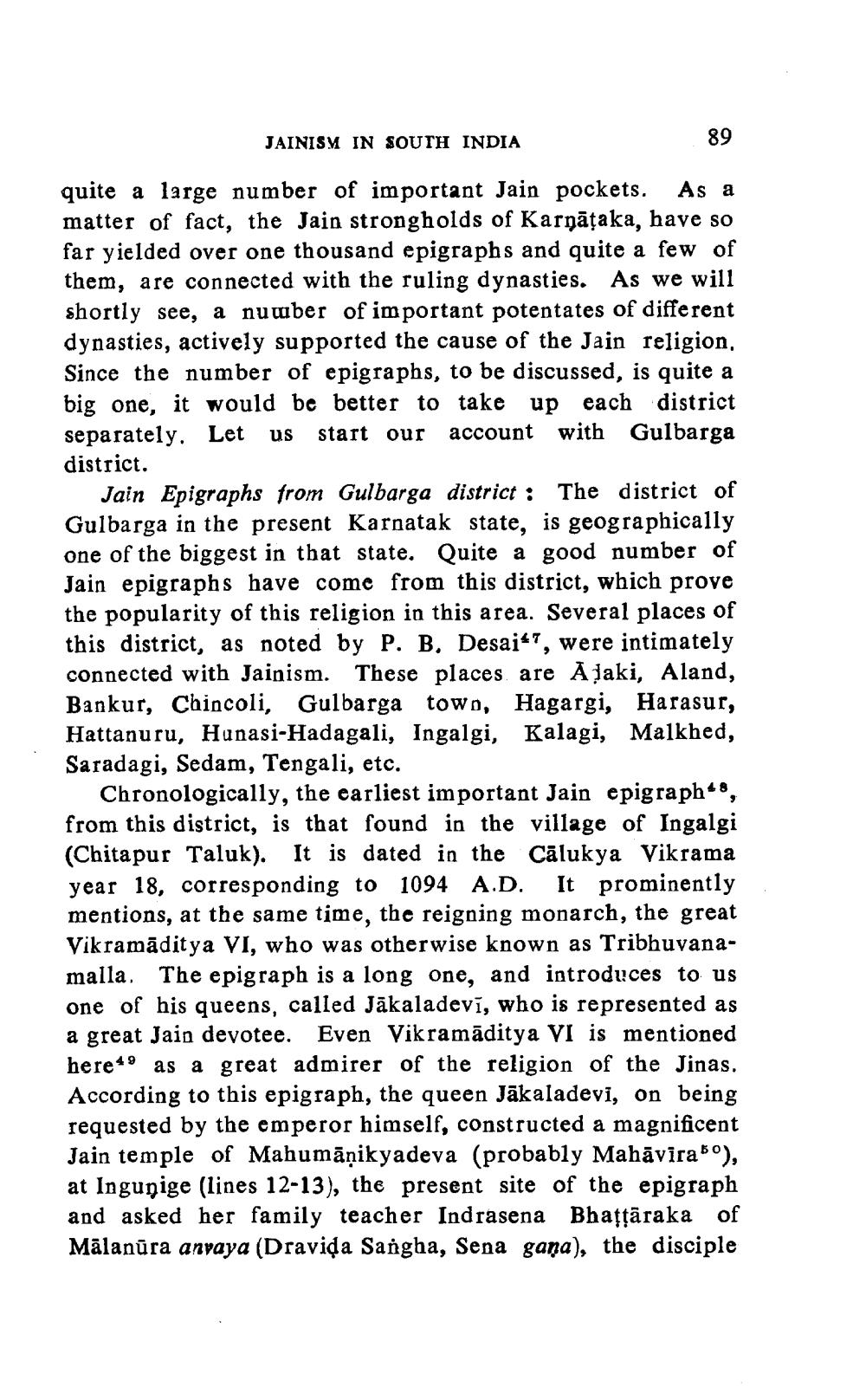________________
JAINISM IN SOUTH INDIA
89
quite a large number of important Jain pockets. As a matter of fact, the Jain strongholds of Karnāțaka, have so far yielded over one thousand epigraphs and quite a few of them, are connected with the ruling dynasties. As we will shortly see, a number of important potentates of different dynasties, actively supported the cause of the Jain religion, Since the number of epigraphs, to be discussed, is quite a big one, it would be better to take up each district separately. Let us start our account with Gulbarga district.
Jain Epigraphs from Gulbarga district : The district of Gulbarga in the present Karnatak state, is geographically one of the biggest in that state. Quite a good number of Jain epigraphs have come from this district, which prove the popularity of this religion in this area. Several places of this district, as noted by P. B. Desai+7, were intimately connected with Jainism. These places, are Ajaki, Aland, Bankur, Chincoli, Gulbarga town, Hagargi, Harasur, Hattanuru, Hanasi-Hadagali, Ingalgi, Kalagi, Malkhed, Saradagi, Sedam, Tengali, etc.
Chronologically, the earliest important Jain epigraph*, from this district, is that found in the village of Ingalgi (Chitapur Taluk). It is dated in the Cālukya Vikrama year 18, corresponding to 1094 A.D. It prominently mentions, at the same time, the reigning monarch, the great Vikramāditya VI, who was otherwise known as Tribhuvanamalla. The epigraph is a long one, and introduces to us one of his queens, called Jākaladevī, who is represented as a great Jain devotee. Even Vikramāditya VI is mentioned here49 as a great admirer of the religion of the Jinas. According to this epigraph, the queen Jākaladevi, on being requested by the emperor himself, constructed a magnificent Jain temple of Mahumāņikyadeva (probably Mahāvīrab), at Inguộige (lines 12-13), the present site of the epigraph and asked her family teacher Indrasena Bhațțāraka of Mālanūra anvaya (Dravida Sangha, Sena gana), the disciple




